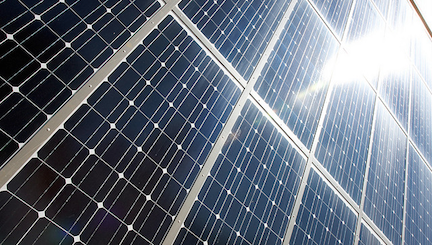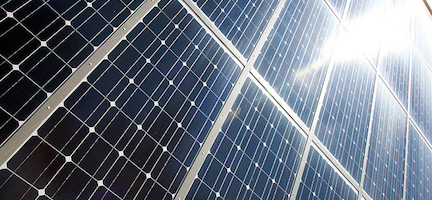
A thin layer of metal oxides could boost maximum solar efficiency from 18 to 24 per cent. (Photo Credit: Michael Baker, flickr)
A thin layer of metal oxides could significantly boost the efficiency of solar cells, according to a new study.
Researchers have been working on a material made of the elements bismuth, iron, chromium and oxygen, which absorbs solar radiation. They discovered that by changing the temperature and pressure at which they deposit thin films of this material, they can control the wavelengths of light that the material can absorb.
The team created a stack of three layers of the material, each absorbing light at different layers, yet which is still only 200 nanometres thick. The stack converted significantly more light to energy than previous attempts with the same material.
The team has patented the discovery, and is planning to add the coating to traditional silicon solar cells, where they estimate it could boost maximum solar efficiency from 18 per cent to 24 per cent.
The new material also has unique electrical and magnetic properties that could be useful in devices such as electronic sensors or flash memory drives.
Original research paper published in Nature Photonics on November 10, 2014.
Names and affiliations of selected authors

